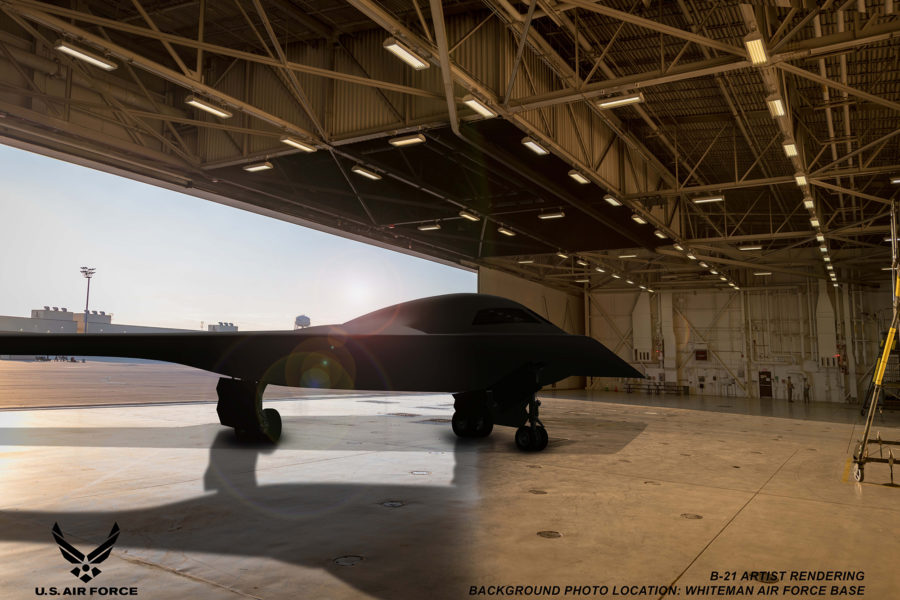Loads testing on the first B-21 Raider bomber is progressing well and matching computer predictions, and a rollout will follow completion of these tests and final equipment installs in the coming weeks, the program director said.
“The data we are seeing back from the loads calibration has been very promising and consistent with digital models,” said Randall Walden, director of USAF’s Rapid Capabilities Office, which is developing the B-21.
“We will complete these tests in the coming weeks and conduct a series of final systems installs and coatings before ultimately moving into flight line ground test operations after rollout,” Walden said through a spokesperson.
His comments indicate that there will be a formal rollout outside Northrop Grumman’s Palmdale, Calif., assembly plant before the B-21 test activities begin. Walden indicated in March that those activities would begin by midyear.
Walden’s remarks added context to the Air Force’s statement May 20 that the B-21 will not fly until 2023. He said that all previous B-21 first flight estimates “have been ‘no-earlier-than’ projections” and reiterated that first flight will be event-driven rather than calendar-driven. Walden made his most recent first-flight estimate in early 2021, when he forecast that the first B-21 would take to the air in mid-2022.
The coatings Walden referred to are last-step applications of material to the aircraft’s exterior to absorb, deflect, or frequency-shift incoming radar signals, which attenuate the B-21’s radar cross-section. Coatings were a persistent issue for the B-2 Spirit bomber until Northrop Grumman—which makes both aircraft—developed machines to apply both outer-layer tape and coatings in a more consistent, even way. At the time, a company official said it marked a shift in application “away from being an ‘art’ to a ’science’” and making the process more repeatable and less prone to error.
Six B-21s are in production at Plant 42 in Palmdale, Walden has reported, with the first aircraft on its landing gear and externally complete in most ways.
Outside engine runs, calibration of various controls, and low- and high-speed taxi tests will precede the first flight.
Substantial declassification of secret aircraft usually accompanies the beginning of outside-the-factory activities such as engine and taxi tests because the airplane will be in full view to outside observers and satellites. Walden has previously indicated that the first B-21 has moved outside Northrop Grumman’s facility at least once, however.
The general appearance of the B-21 is not a secret. The Air Force revealed its overall flying wing shape in 2016, and two subsequent “artist’s interpretations” in January 2020 and July 2021 have revealed some details about the shape of the nose, its unusual upturned cockpit windows, and the arrangement of its landing gear. Consistently absent from Air Force renderings, however, have been any details about its air intakes—which Walden said underwent a “major redesign” about five years ago—and its exhaust area. The inlet redesign had something to do with providing more air for the B-21’s Pratt & Whitney engines, likely buried in the fuselage behind a serpentine inlet to hide the fan blades, which are a major radar reflector.
When the B-2 rolled out in November 1988, the Air Force had planned to keep its exhausts out of plain sight of the assembled guests, hoping to preserve a little longer the configuration of their infrared-masking features, but Aviation Week and Space Technology overflew the ceremony in a small private plane, obtaining overhead views of the B-2 and details of its exhaust. Today, the profusion of high-resolution commercial imaging satellites would make it hard for the Air Force to keep the aircraft out of sight from above while tests take place.
